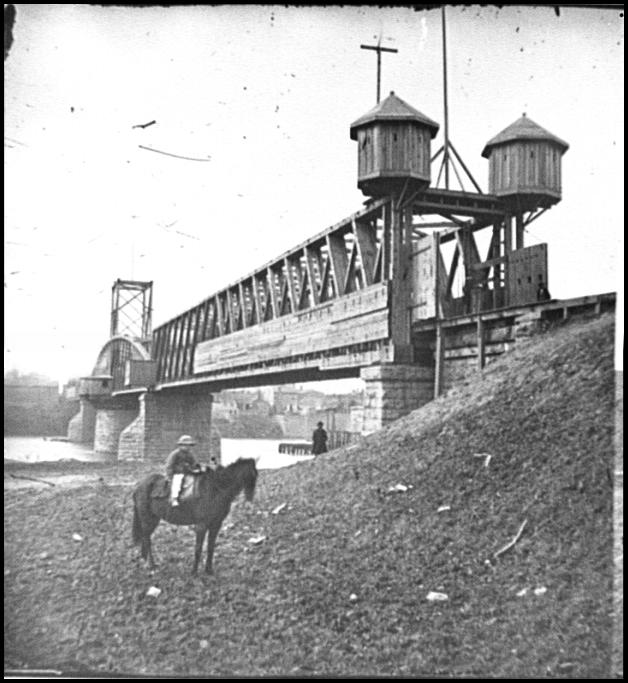 |
 |
Nashville, the capitol of Tennessee, and a major strategic transportation center of great military significance, was served by five railroads during the Civil War: the Louisville & Nashville, the Nashville & Chattanooga, the Nashville & Northwestern, the Tennessee & Alabama (aka Nashville & Decatur to the Federals), and the Edgefield & Kentucky (part of the Federal Nashville & Clarksville).
.jpg)
Nashville railroad facilities and Capitol
in background
[Courtesy Library of Congress, Prints &
Photographs Division, LC-B8171-2651]
Perhaps the best known photograph depicting Tennessee Civil War railroads, this shot by George Barnard captures many details that speak to railroading conditions and practices during the Civil War period--all against a background that includes the magnificent Capitol designed by William Strickland. The complex trackage (note the primitive "stub" switches) is part of the large railroad yard marking the junction of the L&N, N&C, N&Clk, N&NW, and N&D railroads. The row of "American" (4-4-0) locomotives are similar in overall configuration but vary in details: e.g., note that first engine has two steam domes (plus a sand dome), whereas the second has only one steam dome (also with sand dome). Note also the wrecked locomotive and tender on the left side of the photograph. The castellated Church Street Station survived the war, but was demolished at the end of the 19th century when the new Union Station was built.

Fortified bridge across Cumberland River in
Nashville
[Courtesy Library of Congress, Prints &
Photographs Division, LC-B811-2642]
This massively fortified railroad bridge across the Cumberland River at Nashville suggests the high strategic value of such major engineering structures: there are elevated watch towers, heavy reinforced doors, and timber sheathing along the sides of the truss structure. Note the embrasures cut into the sheathing, to allow defending troops to fire on attackers without exposing themselves to enemy fire.
As a major rail junction, Nashville also hosted numerous railroad service facilities, including a major locomotive shop, machine shops, blacksmith shops, etc., along with barracks and mess halls for USMRR and Construction Corps personnel. When combined with the massive warehousing facilities of the city, it becomes readily apparent that Nashville was a highly congested, major urban area (at least within the context of the mid 19th century).
![]() Railroad
Junction Cities | Tennessee Civil
War Railroads | Civil War Technology
& Industry in Tennessee
Railroad
Junction Cities | Tennessee Civil
War Railroads | Civil War Technology
& Industry in Tennessee
Last update: May 9, 2000